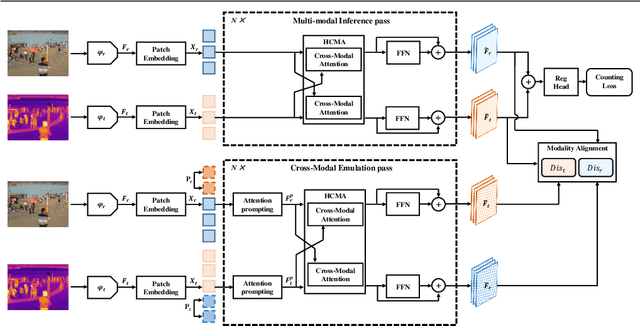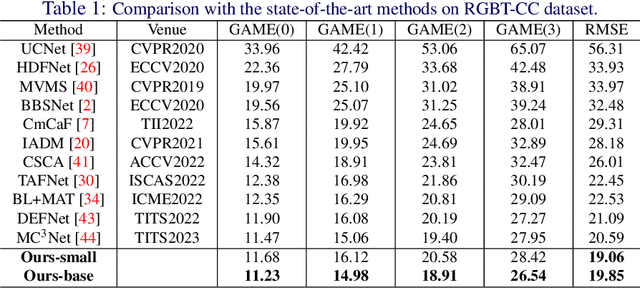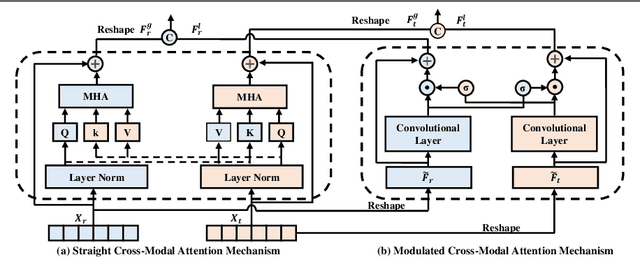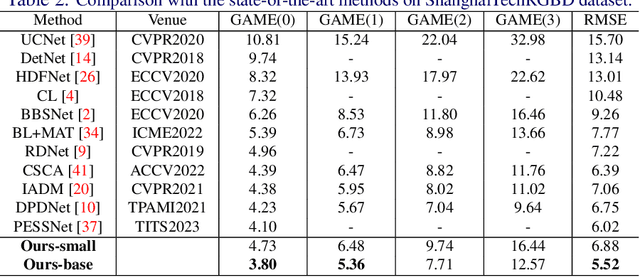Xiaopeng Hong
MEGC2025: Micro-Expression Grand Challenge on Spot Then Recognize and Visual Question Answering
Jun 18, 2025

Abstract:Facial micro-expressions (MEs) are involuntary movements of the face that occur spontaneously when a person experiences an emotion but attempts to suppress or repress the facial expression, typically found in a high-stakes environment. In recent years, substantial advancements have been made in the areas of ME recognition, spotting, and generation. However, conventional approaches that treat spotting and recognition as separate tasks are suboptimal, particularly for analyzing long-duration videos in realistic settings. Concurrently, the emergence of multimodal large language models (MLLMs) and large vision-language models (LVLMs) offers promising new avenues for enhancing ME analysis through their powerful multimodal reasoning capabilities. The ME grand challenge (MEGC) 2025 introduces two tasks that reflect these evolving research directions: (1) ME spot-then-recognize (ME-STR), which integrates ME spotting and subsequent recognition in a unified sequential pipeline; and (2) ME visual question answering (ME-VQA), which explores ME understanding through visual question answering, leveraging MLLMs or LVLMs to address diverse question types related to MEs. All participating algorithms are required to run on this test set and submit their results on a leaderboard. More details are available at https://megc2025.github.io.
Grounding-MD: Grounded Video-language Pre-training for Open-World Moment Detection
Apr 20, 2025Abstract:Temporal Action Detection and Moment Retrieval constitute two pivotal tasks in video understanding, focusing on precisely localizing temporal segments corresponding to specific actions or events. Recent advancements introduced Moment Detection to unify these two tasks, yet existing approaches remain confined to closed-set scenarios, limiting their applicability in open-world contexts. To bridge this gap, we present Grounding-MD, an innovative, grounded video-language pre-training framework tailored for open-world moment detection. Our framework incorporates an arbitrary number of open-ended natural language queries through a structured prompt mechanism, enabling flexible and scalable moment detection. Grounding-MD leverages a Cross-Modality Fusion Encoder and a Text-Guided Fusion Decoder to facilitate comprehensive video-text alignment and enable effective cross-task collaboration. Through large-scale pre-training on temporal action detection and moment retrieval datasets, Grounding-MD demonstrates exceptional semantic representation learning capabilities, effectively handling diverse and complex query conditions. Comprehensive evaluations across four benchmark datasets including ActivityNet, THUMOS14, ActivityNet-Captions, and Charades-STA demonstrate that Grounding-MD establishes new state-of-the-art performance in zero-shot and supervised settings in open-world moment detection scenarios. All source code and trained models will be released.
OpenSDI: Spotting Diffusion-Generated Images in the Open World
Mar 25, 2025Abstract:This paper identifies OpenSDI, a challenge for spotting diffusion-generated images in open-world settings. In response to this challenge, we define a new benchmark, the OpenSDI dataset (OpenSDID), which stands out from existing datasets due to its diverse use of large vision-language models that simulate open-world diffusion-based manipulations. Another outstanding feature of OpenSDID is its inclusion of both detection and localization tasks for images manipulated globally and locally by diffusion models. To address the OpenSDI challenge, we propose a Synergizing Pretrained Models (SPM) scheme to build up a mixture of foundation models. This approach exploits a collaboration mechanism with multiple pretrained foundation models to enhance generalization in the OpenSDI context, moving beyond traditional training by synergizing multiple pretrained models through prompting and attending strategies. Building on this scheme, we introduce MaskCLIP, an SPM-based model that aligns Contrastive Language-Image Pre-Training (CLIP) with Masked Autoencoder (MAE). Extensive evaluations on OpenSDID show that MaskCLIP significantly outperforms current state-of-the-art methods for the OpenSDI challenge, achieving remarkable relative improvements of 14.23% in IoU (14.11% in F1) and 2.05% in accuracy (2.38% in F1) compared to the second-best model in localization and detection tasks, respectively. Our dataset and code are available at https://github.com/iamwangyabin/OpenSDI.
DCA: Dividing and Conquering Amnesia in Incremental Object Detection
Mar 19, 2025Abstract:Incremental object detection (IOD) aims to cultivate an object detector that can continuously localize and recognize novel classes while preserving its performance on previous classes. Existing methods achieve certain success by improving knowledge distillation and exemplar replay for transformer-based detection frameworks, but the intrinsic forgetting mechanisms remain underexplored. In this paper, we dive into the cause of forgetting and discover forgetting imbalance between localization and recognition in transformer-based IOD, which means that localization is less-forgetting and can generalize to future classes, whereas catastrophic forgetting occurs primarily on recognition. Based on these insights, we propose a Divide-and-Conquer Amnesia (DCA) strategy, which redesigns the transformer-based IOD into a localization-then-recognition process. DCA can well maintain and transfer the localization ability, leaving decoupled fragile recognition to be specially conquered. To reduce feature drift in recognition, we leverage semantic knowledge encoded in pre-trained language models to anchor class representations within a unified feature space across incremental tasks. This involves designing a duplex classifier fusion and embedding class semantic features into the recognition decoding process in the form of queries. Extensive experiments validate that our approach achieves state-of-the-art performance, especially for long-term incremental scenarios. For example, under the four-step setting on MS-COCO, our DCA strategy significantly improves the final AP by 6.9%.
T2ICount: Enhancing Cross-modal Understanding for Zero-Shot Counting
Feb 28, 2025Abstract:Zero-shot object counting aims to count instances of arbitrary object categories specified by text descriptions. Existing methods typically rely on vision-language models like CLIP, but often exhibit limited sensitivity to text prompts. We present T2ICount, a diffusion-based framework that leverages rich prior knowledge and fine-grained visual understanding from pretrained diffusion models. While one-step denoising ensures efficiency, it leads to weakened text sensitivity. To address this challenge, we propose a Hierarchical Semantic Correction Module that progressively refines text-image feature alignment, and a Representational Regional Coherence Loss that provides reliable supervision signals by leveraging the cross-attention maps extracted from the denosing U-Net. Furthermore, we observe that current benchmarks mainly focus on majority objects in images, potentially masking models' text sensitivity. To address this, we contribute a challenging re-annotated subset of FSC147 for better evaluation of text-guided counting ability. Extensive experiments demonstrate that our method achieves superior performance across different benchmarks. Code is available at https://github.com/cha15yq/T2ICount.
A Benchmark for Incremental Micro-expression Recognition
Jan 31, 2025



Abstract:Micro-expression recognition plays a pivotal role in understanding hidden emotions and has applications across various fields. Traditional recognition methods assume access to all training data at once, but real-world scenarios involve continuously evolving data streams. To respond to the requirement of adapting to new data while retaining previously learned knowledge, we introduce the first benchmark specifically designed for incremental micro-expression recognition. Our contributions include: Firstly, we formulate the incremental learning setting tailored for micro-expression recognition. Secondly, we organize sequential datasets with carefully curated learning orders to reflect real-world scenarios. Thirdly, we define two cross-evaluation-based testing protocols, each targeting distinct evaluation objectives. Finally, we provide six baseline methods and their corresponding evaluation results. This benchmark lays the groundwork for advancing incremental micro-expression recognition research. All code used in this study will be made publicly available.
ComprehendEdit: A Comprehensive Dataset and Evaluation Framework for Multimodal Knowledge Editing
Dec 17, 2024



Abstract:Large multimodal language models (MLLMs) have revolutionized natural language processing and visual understanding, but often contain outdated or inaccurate information. Current multimodal knowledge editing evaluations are limited in scope and potentially biased, focusing on narrow tasks and failing to assess the impact on in-domain samples. To address these issues, we introduce ComprehendEdit, a comprehensive benchmark comprising eight diverse tasks from multiple datasets. We propose two novel metrics: Knowledge Generalization Index (KGI) and Knowledge Preservation Index (KPI), which evaluate editing effects on in-domain samples without relying on AI-synthetic samples. Based on insights from our framework, we establish Hierarchical In-Context Editing (HICE), a baseline method employing a two-stage approach that balances performance across all metrics. This study provides a more comprehensive evaluation framework for multimodal knowledge editing, reveals unique challenges in this field, and offers a baseline method demonstrating improved performance. Our work opens new perspectives for future research and provides a foundation for developing more robust and effective editing techniques for MLLMs. The ComprehendEdit benchmark and implementation code are available at https://github.com/yaohui120/ComprehendEdit.
Penny-Wise and Pound-Foolish in Deepfake Detection
Aug 15, 2024



Abstract:The diffusion of deepfake technologies has sparked serious concerns about its potential misuse across various domains, prompting the urgent need for robust detection methods. Despite advancement, many current approaches prioritize short-term gains at expense of long-term effectiveness. This paper critiques the overly specialized approach of fine-tuning pre-trained models solely with a penny-wise objective on a single deepfake dataset, while disregarding the pound-wise balance for generalization and knowledge retention. To address this "Penny-Wise and Pound-Foolish" issue, we propose a novel learning framework (PoundNet) for generalization of deepfake detection on a pre-trained vision-language model. PoundNet incorporates a learnable prompt design and a balanced objective to preserve broad knowledge from upstream tasks (object classification) while enhancing generalization for downstream tasks (deepfake detection). We train PoundNet on a standard single deepfake dataset, following common practice in the literature. We then evaluate its performance across 10 public large-scale deepfake datasets with 5 main evaluation metrics-forming the largest benchmark test set for assessing the generalization ability of deepfake detection models, to our knowledge. The comprehensive benchmark evaluation demonstrates the proposed PoundNet is significantly less "Penny-Wise and Pound-Foolish", achieving a remarkable improvement of 19% in deepfake detection performance compared to state-of-the-art methods, while maintaining a strong performance of 63% on object classification tasks, where other deepfake detection models tend to be ineffective. Code and data are open-sourced at https://github.com/iamwangyabin/PoundNet.
Multi-modal Crowd Counting via Modal Emulation
Jul 28, 2024



Abstract:Multi-modal crowd counting is a crucial task that uses multi-modal cues to estimate the number of people in crowded scenes. To overcome the gap between different modalities, we propose a modal emulation-based two-pass multi-modal crowd-counting framework that enables efficient modal emulation, alignment, and fusion. The framework consists of two key components: a \emph{multi-modal inference} pass and a \emph{cross-modal emulation} pass. The former utilizes a hybrid cross-modal attention module to extract global and local information and achieve efficient multi-modal fusion. The latter uses attention prompting to coordinate different modalities and enhance multi-modal alignment. We also introduce a modality alignment module that uses an efficient modal consistency loss to align the outputs of the two passes and bridge the semantic gap between modalities. Extensive experiments on both RGB-Thermal and RGB-Depth counting datasets demonstrate its superior performance compared to previous methods. Code available at https://github.com/Mr-Monday/Multi-modal-Crowd-Counting-via-Modal-Emulation.
Reshaping the Online Data Buffering and Organizing Mechanism for Continual Test-Time Adaptation
Jul 12, 2024



Abstract:Continual Test-Time Adaptation (CTTA) involves adapting a pre-trained source model to continually changing unsupervised target domains. In this paper, we systematically analyze the challenges of this task: online environment, unsupervised nature, and the risks of error accumulation and catastrophic forgetting under continual domain shifts. To address these challenges, we reshape the online data buffering and organizing mechanism for CTTA. We propose an {uncertainty-aware buffering approach} to identify {and aggregate} significant samples with high certainty from the unsupervised, single-pass data stream. {Based on this}, we propose a graph-based class relation preservation constraint to overcome catastrophic forgetting. Furthermore, a pseudo-target replay objective is used to mitigate error accumulation. Extensive experiments demonstrate the superiority of our method in both segmentation and classification CTTA tasks. Code is available at \href{https://github.com/z1358/OBAO}{this https URL}.
 Add to Chrome
Add to Chrome Add to Firefox
Add to Firefox Add to Edge
Add to Edge